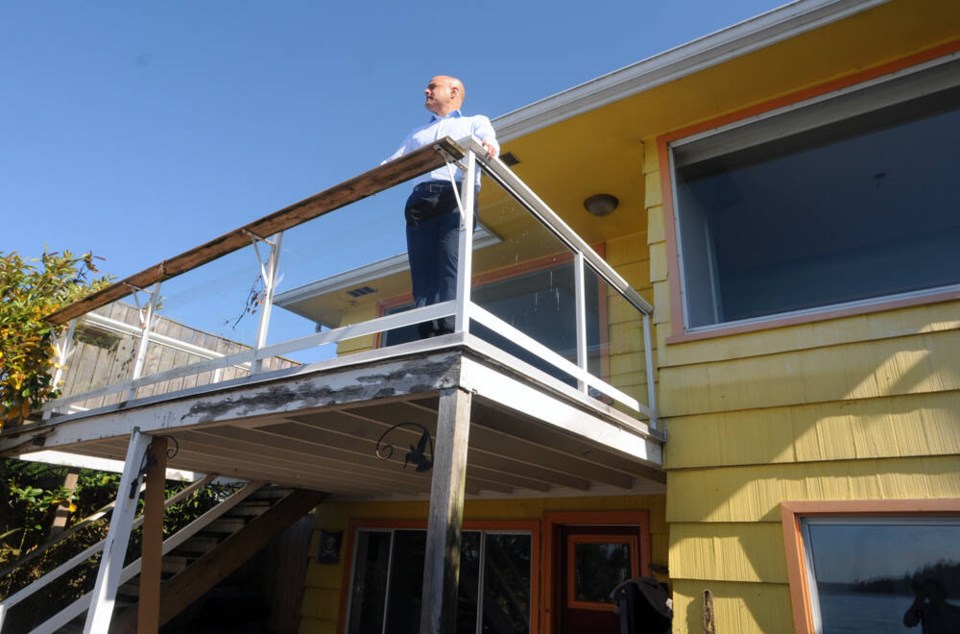Want to buy Jimmy Pattison’s waterfront home? It’s on the market for $1.
The $5-million-plus land underneath it, however, isn’t for sale.
The District of West Vancouver is seeking takers who can salvage and move the 1950 home at 1448 Argyle Ave. rather than demolish it as the municipality prepares to turn the property into a waterfront park.
“There have been several expressions of interest about the Pattison house, and the district is interested in this certainly from an environmental point of view as it will keep things from going into the landfill. The house itself has quite a history and represents a story about West Vancouver, and it would be nice to see it relocated so that its life can be extended as a home,” said district spokesperson Carrie Gadsby. “Any successful candidate for the removal and acquisition of the house would need to do an assessment and apply for the appropriate permits, and we would hope to see it moved as expeditiously as possible.”
The district struck a deal in January to buy the property from the 94-year-old self-made magnate as part of a decades-old strategy to acquire all of the privately held lots on Argyle Avenue and convert them into public park.
Pattison bought the house in the 1950s when he was working as a car dealer. He used his property as collateral to receive his first business loan.
“Some of the best years of my life, and I’ve had a lot of good ones, were in that house,” he told the North Shore News in January.
Pattison later relocated to the British Properties, but he held onto the Ambleside home. While the district agreed to pay Pattison $5.18 million for the property, Pattison turned around and had his company buy two district-owned lots in the former Brissenden Park in Upper Dundarave for $2.59 million each, effectively making it a land-swap.
Pattison said at the time he had no intentions to develop the Brissenden properties or remove their trees.
“I wanted to accommodate the municipality,” Pattison told the North Shore News at the time. “They’re doing the right thing, in my opinion.”
When Pattison’s old house is removed and the land dedicated for public use, the area will be renamed Brissenden Waterfront Park, in honour of the donors who bequeathed Upper Dundarave Land to the district.
Up and away
No one is more pleased to see the house up for relocation than Gil Yaron, managing director of strategic initiatives for Light House, a non-profit group lobbying to keep older homes out of the landfill.
The organization just released a report outlining ways for governments to get houses like Pattison’s into communities where they are badly needed.
About 2,700 single-family homes are demolished every year in Metro Vancouver. Light House estimates about 20 per cent of them would be good candidates for relocation, but only a handful actually are hoisted up and carried away. Home demolition waste, meanwhile, accounts for about 25 per cent of the material going into landfill, Yaron said.
“It undermines housing and environmental policy,” he said. “Ultimately, deconstruction should be a last resort rather than the first.”
Yaron said non-profits and First Nations struggling to get housing built in rural communities where land is available would be incredibly grateful to barge or truck in a home like Pattison’s.
“First Nations want these homes. They are ready to take them,” he said. “If we can facilitate that, it can provide affordable housing in those rural communities. That’s really the best place for them.”
The houses that are suitable for relocation, regardless of where they go, tend to be the sturdiest ones out there, Yaron added.
“Honestly, the interiors of these homes would knock your socks off,” he said. “It’s a travesty what’s going to landfill. They’re probably better than some of the housing that’s currently being built.”
While the non-profit estimates new builds cost between $300-$450 per square foot to build, the cost of relocation is closer to $100-125 per square foot. If they are donated, the home’s former owner will get a tax write-off rather than paying out of pocket for the demolition and landfilling of the materials.
“It’s a housing solution and there’s a very positive financial model for doing this that benefits both the existing homeowner and the community receiving the home,” he said.
Beyond providing the recipients four walls and a roof, relocation means the embodied carbon in construction materials will stay in use and new resources won’t have to be harvested to produce new homes, Yaron added.
Typically when older homes are relocated, it’s because they’re being sought by someone who appreciates their heritage value, but the red tape involved is a major hurdle that dissuades the practice more broadly, Yaron said.
Municipalities and the province both need to step in and make the process easier. Specifically, Yaron said they are seeking a new provincial policy requiring homes to be assessed for relocation before they can be demolished.
The deadline to submit inquiries to the District of West Vancouver for Pattison’s house is noon, June 20.




